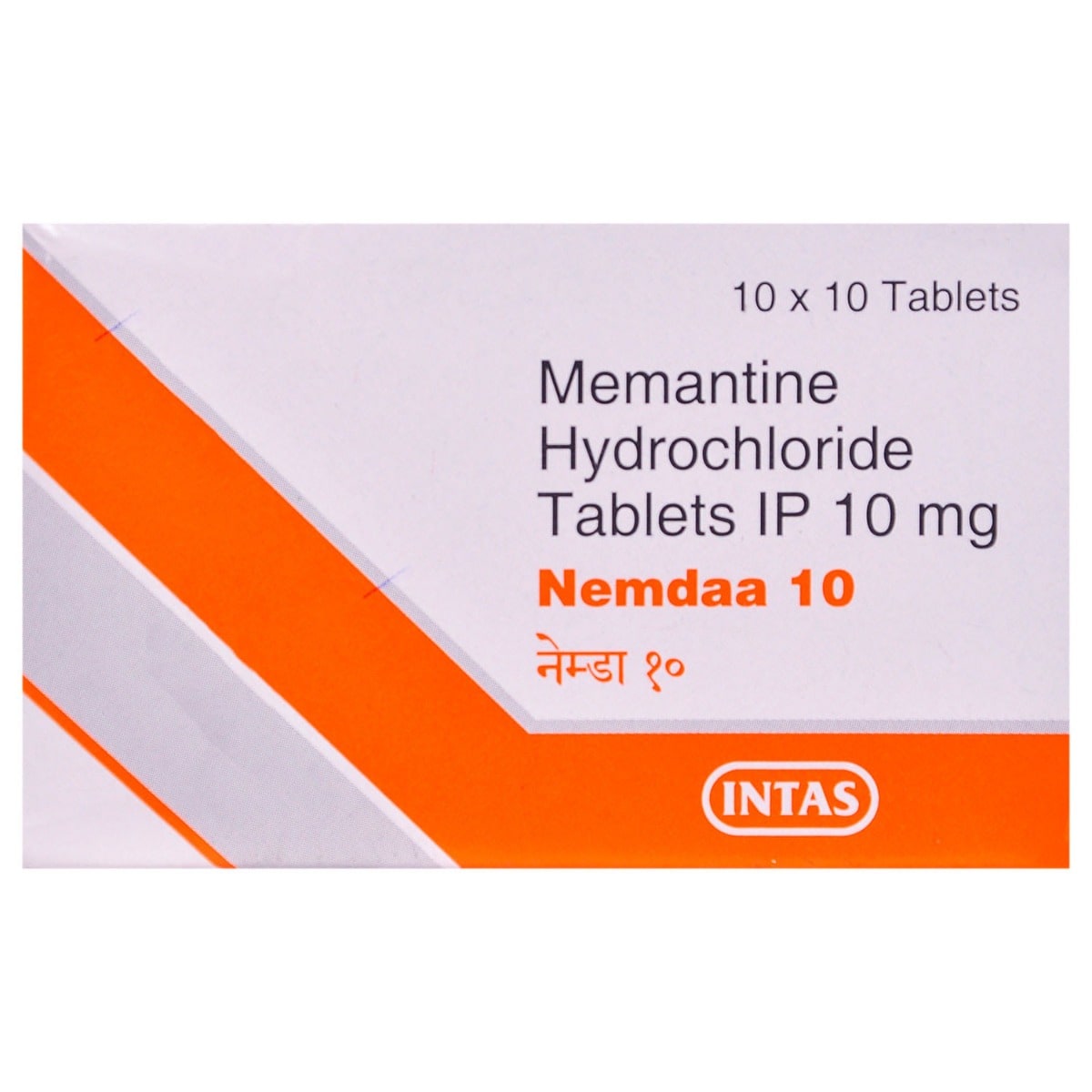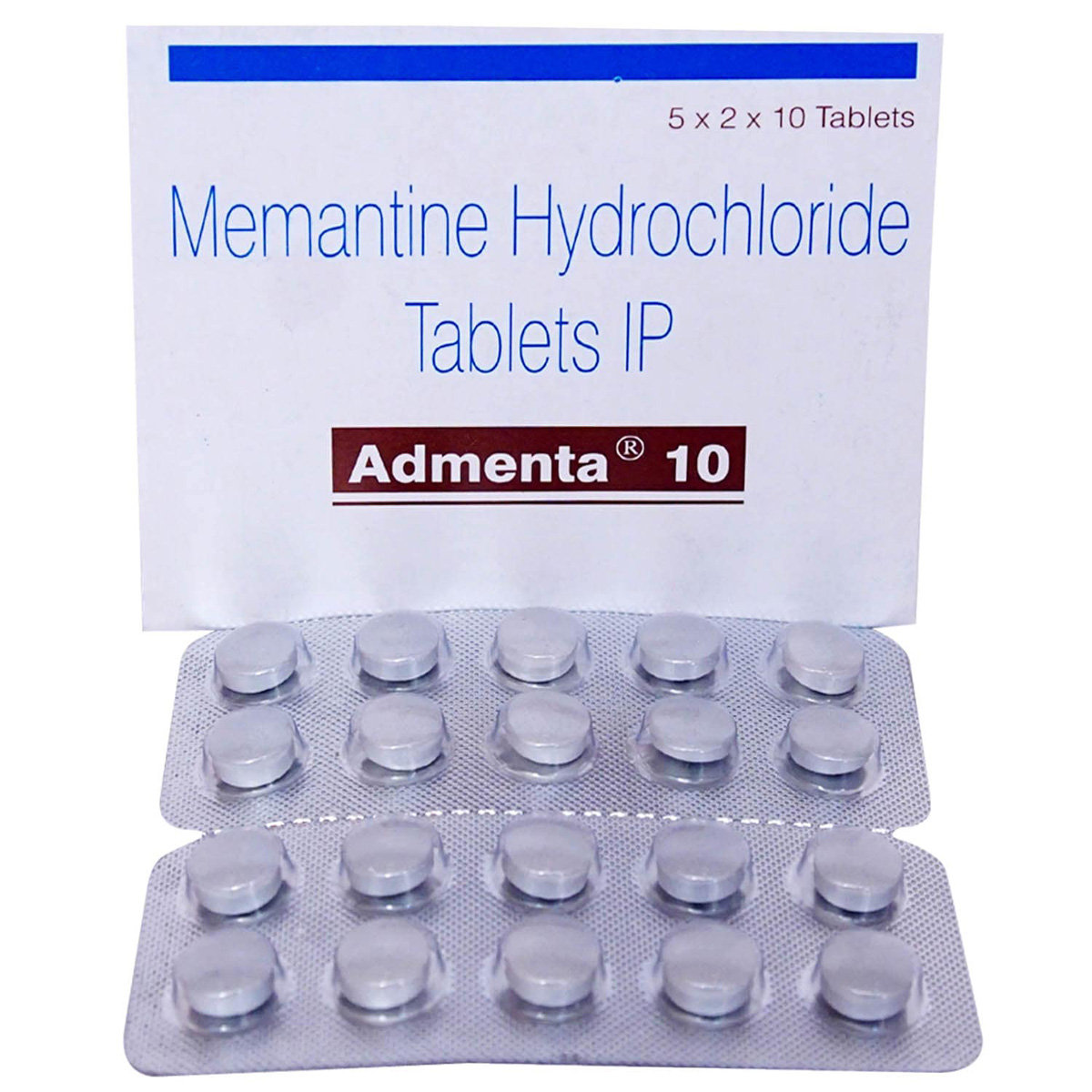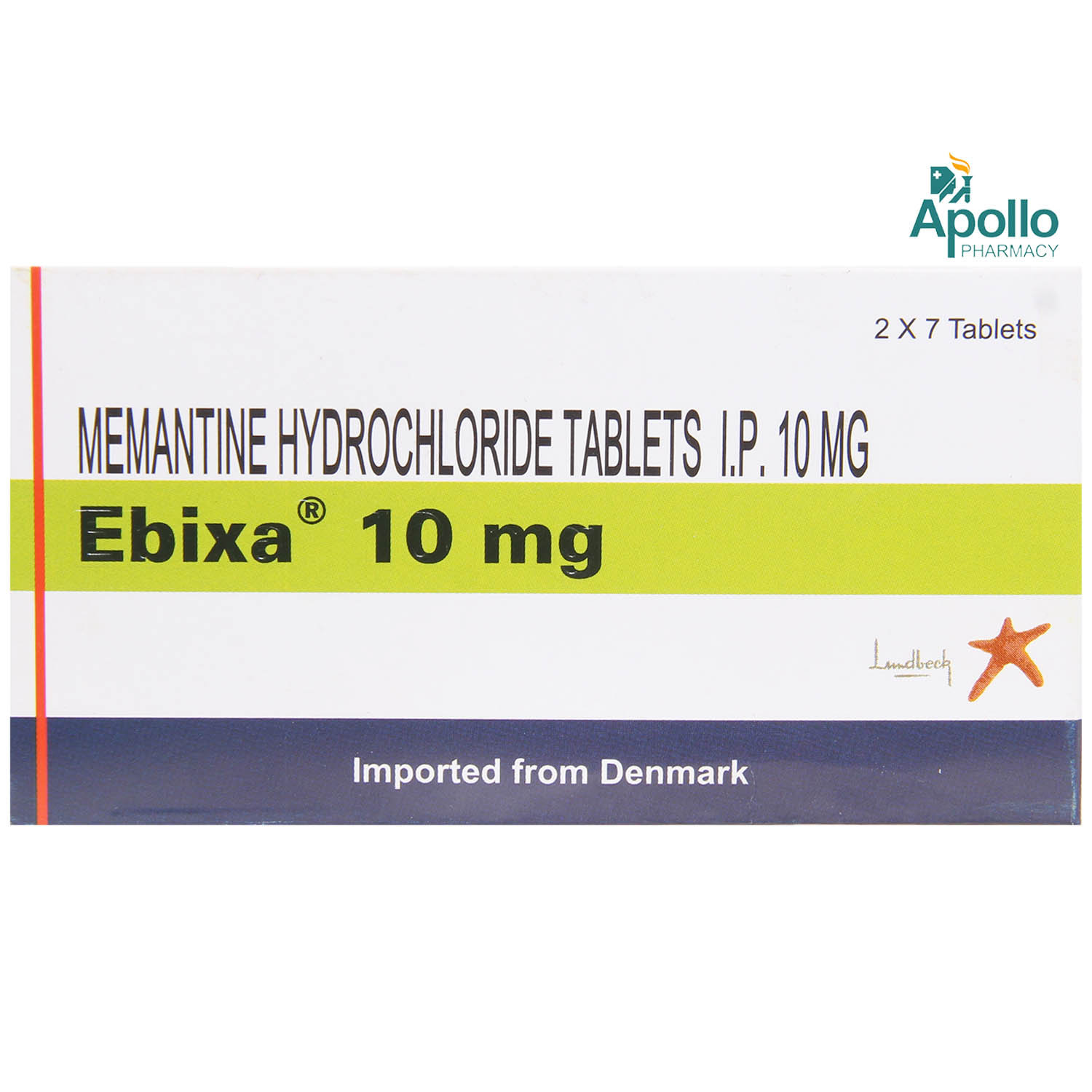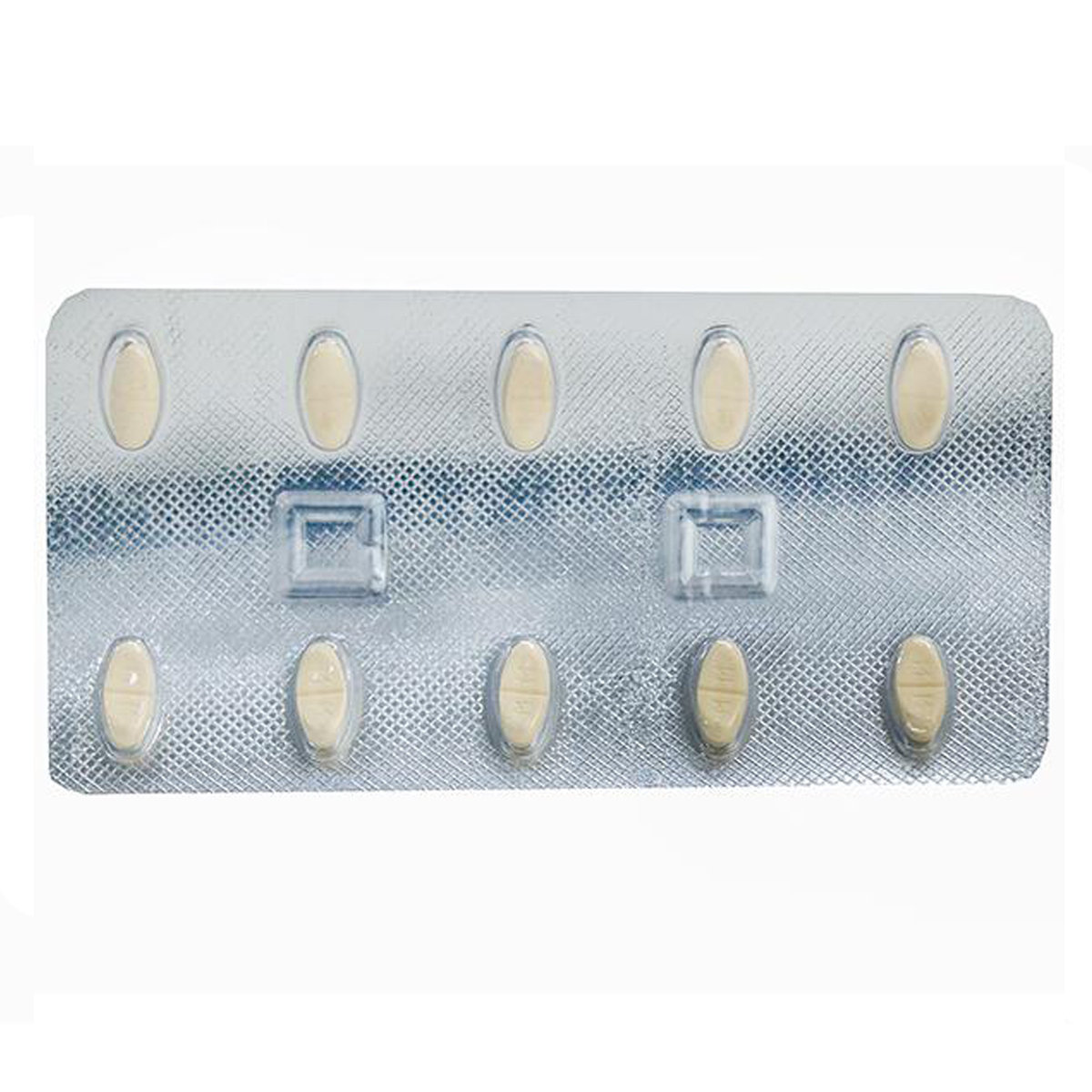- Home
- Senex 10 mg Tablet
Senex 10 mg Tablet Substitute
Senex 10 mg Tablet Substitute
Medicine Composition:
MEMANTINE-10MGAll Substitutes & Brand Comparisons
RX
Meminzer-10 mg Tablet 10's
Tripada Healthcare Pvt Ltd
₹92.5
(₹8.33 per unit)
55% CHEAPERRX
Out of StockDmentin 10mg Tablet MD
Micro Labs Ltd
₹95
(₹8.55 per unit)
54% CHEAPERRX
Out of StockAdmitine 10mg Tablet
₹125
(₹11.25 per unit)
39% CHEAPERRX
Memansys 10 Tablet 10's
Cnx Health Care Pvt Ltd
₹151.5
(₹13.64 per unit)
27% CHEAPERRX
Memipil-10 mg Tablet 10's
Serotonin Pharmaceuticals Llp
₹140.5
(₹14.05 per unit)
24% CHEAPERRX
Diomenta-10 Tablet 10's
Diosma Lifesciences Pvt Ltd
₹159
(₹14.31 per unit)
23% CHEAPERRX
Out of StockDemenzil 10mg Tablet 10's
Alkem Laboratories Ltd
₹160
(₹14.4 per unit)
23% CHEAPERRX
Memary Tablet 10's
Force India Pharma
₹160
(₹14.4 per unit)
23% CHEAPERRX
Meman 10 Tablet 10's
D D Pharmaceuticals Pvt Ltd
₹174
(₹15.66 per unit)
16% CHEAPERRX
Out of StockMentagen-10 Tablet 10's
Cellgen Biopharma
₹201
(₹18.09 per unit)
3% CHEAPERRX
Nemdaa 10 Tablet 10's
Intas Pharmaceuticals Ltd
₹211.5
(₹19.04 per unit)
1% COSTLIERRX
Admenta 10 Tablet 10's
Sun Pharmaceutical Industries Ltd
₹229.5
(₹20.66 per unit)
10% COSTLIERRX
Out of StockMemback-10 mg Tablet 10's
Jagsam Pharma
₹222
(₹22.2 per unit)
18% COSTLIERRX
Out of StockEbixa 10mg Tablet 7's
Lundbeck India Pvt Ltd
₹310
(₹39.86 per unit)
112% COSTLIERRX
Out of StockEbixa 10 mg Tablet 10's
Lundbeck India Pvt Ltd
₹545
(₹49.05 per unit)
162% COSTLIER

When Should You Consider Switching from Senex 10 mg Tablet ?
Patients may explore substitutes in the following scenarios:
- High monthly cost of Senex 10 mg Tablet
- Non-availability in local pharmacies
- Generic recommendation by a doctor
- Side effects or better tolerability with alternatives
What to Know Before Switching
Before you switch from Senex 10 mg Tablet to another medicine, here are some important points to keep in mind:
Same salt, different brands:
Most substitutes contain the same active ingredient - MEMANTINE-10MG, but the fillers, coating, or manufacturing quality may vary slightly.
Consult your doctor first:
Even if the salt is the same, your doctor can confirm if the substitute is right for your condition, dosage, and health history.
Watch out for allergies or reactions:
Some people may react differently to certain brands due to inactive ingredients. If you notice any side effects, inform your doctor immediately.
Price ≠ effectiveness:
A lower-priced substitute doesn't mean it's less effective. Many generic medicines work just as well as branded ones.
Check the dosage form and strength:
Always match the substitute’s strength (e.g., 5mg, 10mg) and form (tablet, capsule, syrup) with what your doctor prescribed.
Uses
Senex 10 mg Tablet is used in the treatment of Alzheimer's disease. The detailed uses of Senex 10 mg Tablet are as follows:
- Alzheimer’s disease: Senex 10 mg Tablet is used to improve memory, awareness, and the ability to perform daily functions in individuals with moderate to severe Alzheimer’s.
- Dementia: Senex 10 mg Tablet improves cognitive function in patients with dementia caused by impaired blood flow to the brain.
- Cognitive impairment: Senex 10 mg Tablet can be used to treat symptoms such as confusion, disorientation, and impaired judgment associated with dementia.
- Behavioral symptoms: Senex 10 mg Tablet reduces aggression, agitation, and mood swings associated with neurodegenerative diseases.
Medicinal Benefits
- Senex 10 mg Tablet belongs to a group of anti-dementia agents called NMDA receptor antagonists.
- Senex 10 mg Tablet is used to treat moderate to severe dementia (memory loss) of Alzheimer's disease.
- Senex 10 mg Tablet acts on the N-methyl-D-aspartate (NMDA) receptors involved in transmitting nerve signals, which play an important role in memory.
- Senex 10 mg Tablet works by decreasing the brain's abnormal activity and may improve the ability to think and remember or might slow the loss of these abilities in people with Alzheimer's disease.
FAQs
The substitutes of Senex 10 mg Tablet contain the same active salt(s) - MEMANTINE-10MG. However, they may differ in price, manufacturing quality, and inactive ingredients. Speak to your doctor to find a suitable option.
Switching to a generic substitute medicine in the place of Senex 10 mg Tablet is often possible if it has the same salt, strength, and dosage form. But always check with your doctor before making any changes to your medication.
Generics versions of Senex 10 mg Tablet are typically more affordable because they don’t include the original brand's research, development, and marketing costs. They contain the same active ingredient and are approved for safety and effectiveness.
Most people don’t notice any difference. However, some may react to different fillers or coatings. If you notice any unusual symptoms after switching, consult your doctor.
Make sure the new medicine has the same active salt, strength, dosage form. Always confirm the change with your doctor or pharmacist.
Substitutes of Senex 10 mg Tablet meet the same safety and efficacy standards as Senex 10 mg Tablet , but small differences in absorption or formulation can exist. A doctor can help you choose the right one for your needs.
Yes. Substitutes of Senex 10 mg Tablet may vary in color, size, or shape due to differences in manufacturing and branding, but this does not affect how they work.
Yes, it’s generally safe to switch between multiple substitutes of Senex 10 mg Tablet if they have the same salt and strength. However, always inform your doctor so they can monitor how your body responds.
Yes, many people safely use substitutes of Senex 10 mg Tablet for long-term treatment. Just ensure it’s done under medical supervision.
If your symptoms stay under control or lab results remain stable, the substitute for Senex 10 mg Tablet is likely working well. Regular follow-ups with your doctor are important.
Absolutely. Even with the same salt, small differences can affect how your body responds when switching from Senex 10 mg Tablet to its substitute. Always consult your doctor before switching.
Senex 10 mg Tablet is used to treat moderate to severe Alzheimer's disease, a neurological disorder that causes dementia (memory loss) and slowly destroys the ability to think, learn, communicate, and handle daily activities.
Senex 10 mg Tablet acts on the N-methyl-D-aspartate (NMDA) receptors involved in the transmission of nerve signals, which play an important role in learning and memory. Senex 10 mg Tablet decreases the brain's abnormal activity and may improve the ability to think and remember, or might slow the loss of these abilities in people with Alzheimer's disease.
Senex 10 mg Tablet is used to treat dementia associated with Alzheimer's disease. Dementia (memory loss) is the loss of cognitive functioning, such as remembering, thinking, and reasoning.
Senex 10 mg Tablet does not cure Alzheimer's disease. Senex 10 mg Tablet improves the ability to think and remember, or slows the loss of these abilities in people with Alzheimer's disease. Research is still in progress for the cure of Alzheimer's disease.
Do not discontinue Senex 10 mg Tablet without consulting your doctor. To treat your condition effectually, continue taking Senex 10 mg Tablet for as long as prescribed. Do not be reluctant to speak with your doctor if you feel any difficulty while taking Senex 10 mg Tablet .
Diarrhoea could be a side-effect of Senex 10 mg Tablet . Drink plenty of fluids and eat non-spicy food if you experience diarrhoea. Consult your doctor if you experience excessive diarrhoea or if you find blood in your stools.
Senex 10 mg Tablet may cause high blood pressure. Regular monitoring of blood pressure levels is advised while taking Senex 10 mg Tablet . Consult your doctor if you experience any fluctuations.
Senex 10 mg Tablet does not have the potential for abuse. It is not a habit-forming drug.
Take Senex 10 mg Tablet as advised by the doctor. To help you remember to take Senex 10 mg Tablet , take it at around the same time daily. Senex 10 mg Tablet should be swallowed as a whole with water; do not crush or chew it.
Senex 10 mg Tablet starts working in 3-8 hours. However, it can take up to 3 months to notice full benefits.
The signs and symptoms of overdose include confusion, agitation, weakness, visual hallucinations, vertigo, coma, slowed movement, excess sleepiness, dizziness, lethargy (lack of energy), loss of consciousness, increased blood pressure, ECG changes, slow heart rate, psychosis, restlessness, stupor, unsteady gait (unstable pattern of walking), and vomiting. If you suspect you have taken an overdose or notice signs of overdose, please consult a doctor immediately.
Senex 10 mg Tablet decreases the brain's abnormal activity and may improve the ability to think and remember.
Dementia is the loss of cognitive functioning, such as remembering, thinking, and reasoning. The causes of this disease are abnormal functioning of brain cells, which leads to a disturbance in communication between them.
Do not discontinue Senex 10 mg Tablet without consulting your doctor. To treat your condition effectively, keep taking Senex 10 mg Tablet for the prescribed duration.
Senex 10 mg Tablet causes sleepiness as a side effect. Therefore, avoid driving or operating machinery.
Senex 10 mg Tablet can be combined with donepezil if prescribed by the doctor.
Consult the doctor if you are taking antiparkinson's (amantadine), anaesthetic (ketamine), anti-tussive (dextromethorphan), skeletal muscle relaxant (dantrolene, baclofen), antacid (cimetidine, ranitidine), anti-arrhythmic (procainamide, quinidine), anti-malarial (quinine), an alkaloid (nicotine), diuretic (hydrochlorothiazide), dopaminergic agonist (levodopa, bromocriptine), anti-psychotic (quetiapine), anticonvulsants (used to treat fits), barbiturates (used to induce sleep), neuroleptics (used to treat mental disorders), and oral anticoagulants.
Senex 10 mg Tablet may have interaction with cardiac medicines like anti-arrhythmic (procainamide, quinidine), and diuretic (hydrochlorothiazide). Consult the doctor before taking these medicines with Senex 10 mg Tablet .
Senex 10 mg Tablet can be taken with or without food.
Senex 10 mg Tablet may cause common side effects such as headache, sleepiness, dizziness, diarrhoea, constipation, balance disorders, and high blood pressure. You are advised to talk to your doctor if you experience any of these side effects persistently.
Pregnant women should take Senex 10 mg Tablet only if prescribed by the doctor. It is advisable to consult a doctor before using Senex 10 mg Tablet if you are pregnant, think you may be pregnant or planning for pregnancy.
Breastfeeding is not recommended while taking Senex 10 mg Tablet . Consult your doctor before taking Senex 10 mg Tablet if you are breastfeeding.
Senex 10 mg Tablet should be used with caution in patients with kidney or liver disease and only if prescribed by the doctor. Please consult the doctor if you have liver or kidney problems.
Buy best C.n.s Drugs products by
Intas Pharmaceuticals Ltd
Sun Pharmaceutical Industries Ltd
Torrent Pharmaceuticals Ltd
Alkem Laboratories Ltd
Alteus Biogenics Pvt Ltd
Abbott India Ltd
Cipla Ltd
Micro Labs Ltd
Lupin Ltd
Tripada Healthcare Pvt Ltd
D D Pharmaceuticals Pvt Ltd
Ipca Laboratories Ltd
Arinna Lifesciences Ltd
Icon Life Sciences
Linux Laboratories Pvt Ltd
Mankind Pharma Pvt Ltd
Cnx Health Care Pvt Ltd
East West Pharma India Pvt Ltd
La Renon Healthcare Pvt Ltd
Emcure Pharmaceuticals Ltd
Eris Life Sciences Ltd
Leeford Healthcare Ltd
Talent India Pvt Ltd
Consern Pharma Ltd
Tas Med India Pvt Ltd
Macleods Pharmaceuticals Ltd
Zydus Healthcare Ltd
Jagsam Pharma
Troikaa Pharmaceuticals Ltd
Dr Reddy's Laboratories Ltd
Ikon Pharmaceuticals Pvt Ltd
Matias Healthcare Pvt Ltd
Sigmund Promedica
Aristo Pharmaceuticals Pvt Ltd
Ardent Life Sciences Pvt Ltd
Shine Pharmaceuticals Ltd
Zydus Cadila
Theo Pharma Pvt Ltd
Wockhardt Ltd
Propel Healthcare
Lifecare Neuro Products Ltd
Crescent Formulations Pvt Ltd
Mesmer Pharmaceuticals
Matteo Health Care Pvt Ltd
Reliance Formulation Pvt Ltd
Morepen Laboratories Ltd
Ajanta Pharma Ltd
Capital Pharma
Neon Laboratories Ltd
Med Manor Organics Pvt Ltd
Akumentis Healthcare Ltd
Lyf Healthcare
Msn Laboratories Pvt Ltd
Sanix Formulation Pvt Ltd
Pulse Pharmaceuticals
Brainwave Healthcare Pvt Ltd
Hetero Healthcare Pvt Ltd
Cyrus Remedies Pvt Ltd
Sanofi India Ltd
Solvate Laboratories Pvt Ltd
Elder Pharmaceuticals Ltd
Novartis India Ltd
Psyco Remedies Ltd
Medishri Healthcare Pvt Ltd
Quince Lifesciences Pvt Ltd
Alniche Life Sciences Pvt Ltd
Crescent Therapeutics Ltd
Hbc Life Sciences Pvt Ltd
Mova Pharmaceutical Pvt Ltd
Prevego Healthcare & Research Pvt Ltd
Cadila Healthcare Ltd
Tripada Lifecare Pvt Ltd
Alembic Pharmaceuticals Ltd
Solis Pharmaceuticals
Talin Remedies Pvt Ltd
Kivi Labs Ltd
Serotonin Pharmaceuticals Llp
Glenmark Pharmaceuticals Ltd
Infivis Life Care
Aareen Healthcare Pvt Ltd
Trion Pharma India Llp
A N Pharmacia Laboratories Pvt Ltd
Gagnant Healthcare Pvt Ltd
Primus Remedies Pvt Ltd
Crescent Pharmaceuticals
Glarizonto Pharma Pvt Ltd
Knoll Healthcare Pvt Ltd
Lyceum Life Sciences Pvt Ltd
Wallace Pharmaceuticals Pvt Ltd
Zuventus Healthcare Ltd
Arches Pharmaceuticals
Cadila Pharmaceuticals Ltd
Divine Savior Pvt Ltd
Lia Life Sciences Pvt Ltd
Lincoln Pharmaceuticals Ltd
USV Pvt Ltd
Vasu Organics Pvt Ltd
Corona Remedies Pvt Ltd
Glial Life Science Llp
Maneesh Pharmaceuticals Ltd








